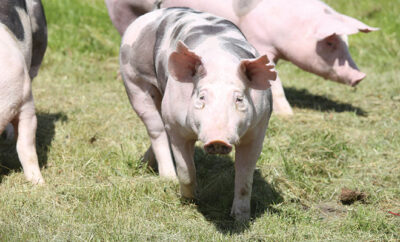
Poke: The New Sushi
If you enjoy cooking, you probably also love going out to eat. Breezing through a menu is a great break from cooking. But some menus can be more challenging than others, especially if you’re navigating a menu while trying to lose weight.
There’s one food that always makes me feel I’m making a healthy choice—sushi. The specialty balances protein with a spoonful of rice, just the right amount of spicy wasabi, a tangy bite of pickled ginger and a splash of salty soy sauce. And because sushi and sashimi are plated like works of art, the whole meal is almost ceremonial.
But sushi is also expensive. If you’re dining out on your lunch hour, you may be pressed for time, which means ordering carryout. That ruins the part where the beauty of the meal is in the presentation. Ah, if only there were a way to deconstruct sushi, making it a healthy one-bowl meal and a less costly experience.
But there is such a thing as deconstructed sushi. That would be poke, a dish with origins in the Hawaiian Islands. Poke, which rhymes with “okay,” is a Hawaiian word that means “to cut or chop.” Think chopped salad, Hawaiian-style. Originally this dish used scraps of fish mixed with seaweed, crushed nuts and salt. Over time, the dish has evolved into one that combines vegetables such as avocado and cucumber, topped with sashimi-grade raw fish such as ahi tuna, salmon or yellowtail, seasoned with a variety of sauces. Sometimes it’s served with rice, sometimes not. This has become an iconic dish in Hawaii. It might be a snack, or a meal. It’s served in restaurants and it has also become the ultimate fast food, sold in carryout bowls at gas stations.
With ingredients that range from tofu and vegetables to ahi tuna and lobster, poke clearly lends itself to fast food as well as fine dining. The combination of ingredients can be as simple as a make-it-yourself buffet to a beautifully seasoned and plated meal.
If you haven’t yet heard of poke, chances are you will soon. This Hawaiian food has gone mainstream on the mainland, with more than 300 poke restaurants starting up over the past couple of years. Do you wonder why they have sprung up that quickly? It’s partly economics and partly demand.
First, follow the money. Most restaurants require a wide range of equipment to be competitive: ovens, ranges, grills, fryers. If you’re grilling, you must meet code for venting fumes, and ventilation systems alone can fall into a six-figure price range. There are also requirements to properly store and dispose of used oil. The costs of outfitting a commercial kitchen can be considerable.
Compare that with the equipment needed for a poke restaurant: a rice cooker and a refrigerator to store fish, vegetables and sauces. Of course, the sky can be the limit; some restaurants opt for a sous vide device to serve eggs poke, but the startup costs are much less when compared with more conventional restaurants.
Poke has also become popular due to the demand for fresh, healthy, high-protein meals at an affordable price. From a nutritional standpoint, poke gets high points because it combines fresh, lean protein with veggies. The fish provides a boost of omega-3 fatty acids, which is beneficial for the cardiovascular system. The only thing one might need to watch is the sodium content of any marinades or sauces.
Are there any down sides to this latest food trend? One big consideration is sustainability of the main ingredient, fish. Reports on world fisheries show that 90 percent of “big fish” such as tuna, swordfish, cod, halibut and flounder have disappeared. This means that about 10 percent of these species remain in the world’s oceans. Consumer demand for seafood must be balanced against the possibility of depleting the reserves of fishing stock. And overfishing is not the only variable affecting different species; pollution plays a role, as do rising ocean temperatures.
Maintaining fisheries requires a global effort that includes the commercial fishing industry, governments, food suppliers and retailers. If you’re concerned about what kind of seafood to order or avoid, the Monterey Bay Aquarium’s SeafoodWatch offers updated lists of the best seafood choices and good alternatives, as well as seafood to avoid due to overfishing or unsustainable fish farming. That’s good information to have, whether you’re ordering fish at a restaurant or buying it to prepare at home.
Keep your eyes open for poke restaurants where you live. Whether you order out or make it at home, remember that poke should be served like a freshly tossed salad. Whether your protein is fish or tofu, you can enjoy your own spin on this dish that’s known as “the hamburger of Hawaii.” ■
Sources: bloomberg.com, businessinsider.com and economist.com.







